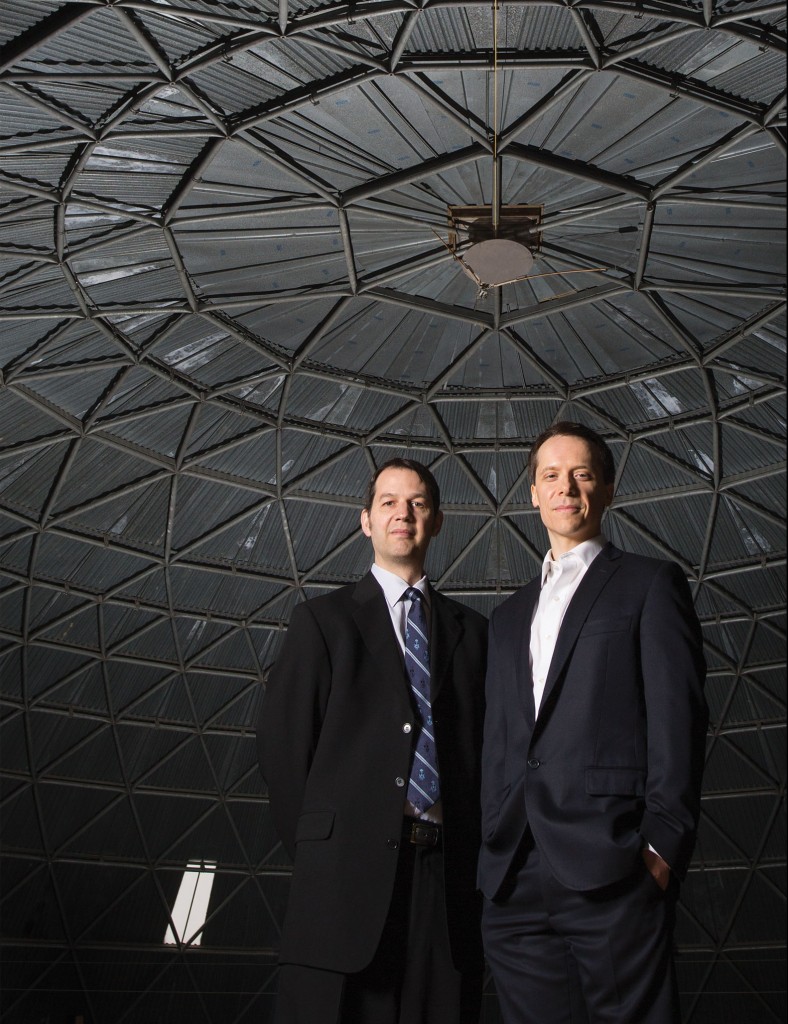Professors Glenn Hibbard and Craig Steeves are creating lighter, stronger planes
[sharexy]
June 18, 2015 | By Sarah McDonald
—Originally published in the spring 2015 issue of U of T Research’s Edge Magazine

When most people board a plane, they probably aren’t thinking about the complex invisible structures inside the materials that make up the body or wings of the aircraft. Fortunately for the rest of us, Craig Steeves and Glenn Hibbard are.
Steeves is an assistant professor in the University of Toronto Institute for Aerospace Studies (UTIAS) and Hibbard is an associate professor for the Department of Materials Science and Engineering (MSE). Together they are using 3D printing capabilities to develop new materials for use in aviation that are lighter, stiffer and stronger than anything seen before.
“If we can do something that reduces their weight, that has a direct effect on how much fuel they require.”
Steeves, who also heads up the Advanced Aerospace Structures Group at UTIAS, says his research into sustainable aviation lined up nicely with Hibbard’s work combining micro-structural and architectural design to develop new materials.
“We think a lot about sustainable aviation: the environmental impact of aircraft. If we can do something that reduces their weight, that has a direct effect on how much fuel they require,” Steeves explains.
That’s where Hibbard’s research and 3D printing come into play.
To manufacture these strong, lightweight components is a two-step process. Step one is 3D printing a polymeric template which is then metalized. Step two is to deposit a metal sleeve with an internal nanostructure that makes it very strong.“So it’s really two fundamentally different processes that are combined together to give us a new kind of material,” Hibbard explains.
It’s a material Steeves says would have been close to if not entirely impossible to create before the advent of the 3D printer.
“Typically to make something, you have to start out with a piece of material bigger than what you want and then cut pieces out like a sculpture, like Michelangelo sculpting, whereas 3D printing is more like what a potter does. A potter starts with the right amount of material and just shapes it until it’s the right form. Now with 3D printing you can do things that are much more complicated than a pot, of course, which is the wonderful advantage. We can make essentially any shape we want, and then with the electro deposition process, we can put really high performance metal onto virtually any shape.”
Steeves says the capacity 3D printing has to combine complex geometry and high per- formance material could open a world of possibility for sustainable aviation and beyond. “High performance material gets us high strength for relatively low mass, which is perfect for building more sustainable, environmentally-friendly aircraft.”